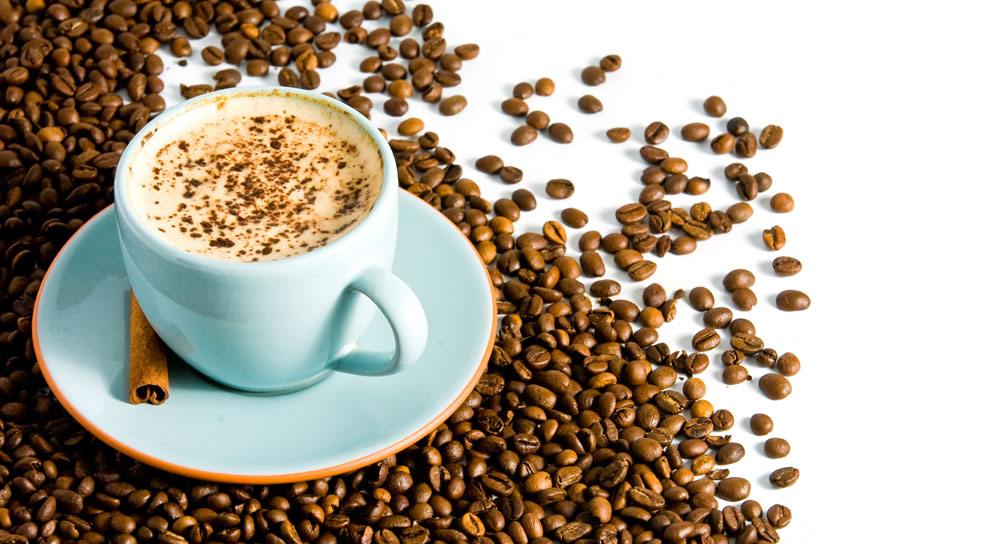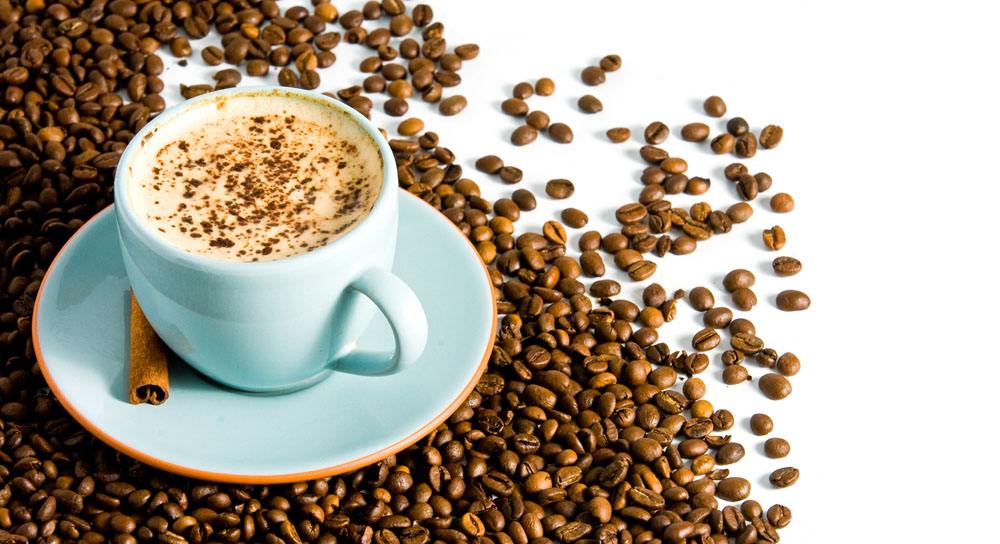Analyze the common taste and astringency of coffee
Follow the caf é (Wechat official account vdailycom) and found that Beautiful Cafe opened a small shop of its own.
Astringent taste-this taste bound with persimmons and cucumbers sometimes unfortunately appears in coffee. Once a good cup of coffee appears astringent taste, that is, white jade is slightly flawed, and this astringent taste can easily become more intense as the temperature of the coffee drops, becoming sour and bitter. Many students, especially those in the junior class, tend to make coffee with astringent taste. Even skilled baristas will make astringent taste if they operate it improperly. What is more troubling is that many people do not know which link this astringent taste comes from. As for how to avoid it through adjustment, I am at a loss as to what to do. To sort out this article, it can be regarded as analyzing the "astringency" with you.
What is astringency?
Let's first look at the meaning of the word "astringent".
Astringency is an easy word in seal characters, which is composed of four stops. Stop fingers and feet, four feet opposite each other, top together, indicating that none of the feet move.
The original meaning of astringency is not slippery, which extends to the taste that makes the tongue feel numb and not smooth. It also refers to slow speech, difficulty and unsmoothness, and then refers to the heckling of the words, which makes it impossible to read smoothly.
Astringency also wrote "Yan" in ancient times. Xu Shen explained in Shuowen in the Eastern Han Dynasty: if it is not slippery, it will not slip.
Du Fu also wrote in the poem "diseased tangerine" that "it is a pity that it is small and sour as a pear." The ancients' understanding of "astringent" is the same as it is today.
Astringency exists in many foods, needless to say persimmon and cucumber, many immature fruits are inevitably astringent, so there is the word "green and astringent", and astringency is often found in common drinks such as red wine, tea and coffee.
Scientific analysis, astringent taste is different from sweet and sour, it is not a kind of taste, strictly speaking, it should be called "astringent", it is the rough feeling created by polyphenols in food in the mouth. Polyphenols are found in a variety of fruits as well as tea, red wine, chocolate and coffee. Chlorogenic acid, tannic acid and catechin all belong to polyphenols.

So what substances does the astringency in coffee come from?
The astringency in coffee mainly comes from dicaffeoylquinic acid (Decaffeoylquinic aic) degraded by chlorogenic acid (Chlorogenic acid) during roasting. In addition, a small amount of tartaric acid (Tartaric acid), also known as "gluconic acid", is also the source of astringency. The astringency in coffee is mainly due to the condensation of dicaffeoylquinic acid with the protein in oral saliva and produces a wrinkled astringency in the oral epithelial tissue.
So, why on earth do these astringency come into being? How can it be avoided?-- this is the focus of everyone's concern.
Many people blame the astringency of coffee on baristas or bakers, thinking that it is caused by improper extraction or roasting, but in fact there are many reasons for astringency. Let's analyze them one by one!
First of all, the part of raw beans.
The difference of astringency caused by the difference of variety. Robesta beans tend to be more astringent than Arabica beans, because the chlorogenic acid content of Arabica beans is only 5.5%, while that of Robesta beans is 7%. As a result, the content of "dicaffeoylquinic acid" is higher after baking. This is one of the reasons why some international fast food chains tend to be "bitter and astringent"-the heavy use of cheap Robosta beans.
Of course, quality-conscious coffee shops of course use Arabica beans. Arabica beans also have different astringency due to their different growth environment. High-altitude excellent Arabica beans because of the mature period of full fruit and rich in sugar, brewed coffee is often good flavor and round taste without astringency, while low real estate beans tend to have a thin flavor, astringency will also be more prominent because of the overall taste.
No matter what kind of variety or what kind of production conditions, unripe beans are a major culprit causing astringency.
Like many fruits, immature coffee beans contain more chlorogenic acid, so unripe beans are listed as defective. The higher the grade of coffee beans, the less the number of defective beans. Although the raw beans we get are specialty coffee with very low defect rate, we have to hand-select them again before baking to ensure that the taste is pure.
In addition, the silver skin on raw coffee beans is also the cause of astringency, too much silver skin attached to raw beans, especially when it can not be removed in baking, it is easy to cause the astringency of coffee.
Even if the variety, picking and processing of the front raw bean are very in place, it is easy to produce astringency if it is not operated properly in the baking process. What for?
On the one hand, if excessive firepower causes uneven baking "outer coke endogenesis", it is easy to produce astringent feeling and raw bean taste.
On the other hand, poor smoke exhaust or too small opening of the air valve in the baking process will also make the coffee taste muddy and easy to form a sense of astringency in the cup.
Of course, very shallow roasting can also cause an obvious sense of astringency, and it is occasionally heard that some roasters "bake beans shallowly or even before the end of an explosion in order to show the acidity of coffee." this operation is especially aimed at beans with high hardness such as Kenya, which is almost inevitable if the beans are produced before the explosion.
The last step of astringency is extraction-how many baristas should be complaining here!
However, if not professional or careful, no matter how good the coffee beans will be destroyed in the hands of baristas, resulting in a sense of astringency, for the following reasons:
First, the water temperature is too low, the extraction water temperature of coffee is generally about 90 degrees, of course, there is no absolute standard for extraction water temperature, and it varies according to the practice and coffee beans, but interested friends might as well do an experiment and try the extraction with a water temperature below 80 degrees. The astringency will be obvious. Of course, if you are worried about the astringency of your coffee, re-measure the water temperature or raise the extraction temperature and try again!
Second, the extraction time is too long. Astringent feelings can be caused by excessive extraction along with other miscellaneous smells. In fact, these two reasons will have a similar phenomenon when making tea.
Third, the degree of grinding is too fine. Too fine grinding greatly increases the chances of miscellaneous taste and astringency. We all have a deep understanding of this in the course on grinding degree regulation in class.
The above is the main cause of astringency. So, how to avoid the production of astringency?
It is still the check from raw beans to baking to extraction.
Good varieties and good growing environment of coffee beans, when picking to "choose only ripe coffee fruit" and get rid of those unripe beans.
Keep the smoke discharge unobstructed and proper firepower in the baking process, so that the raw beans are baked evenly and the internal substances are transformed completely.
Proper operation, proper water temperature, grinding degree and extraction time are essential during extraction.
In addition, the astringency in Espresso has something to do with the unevenness of filling, which should be grasped in detail.
Although astringency is not as strong as bitterness and sour thorns, it is like a ghost, sometimes it can be clearly felt in the coffee just extracted, sometimes it is not obvious when it is hot, and it will be magnified when the coffee becomes cold, and this feeling affects our sense of taste. it will linger in the mouth for a long time, bringing us unhappiness. Therefore, to extract a good cup of coffee, we should first avoid astringency and miscellaneous taste, and then pursue the richness and balance of taste on the premise of pure taste.
Important Notice :
前街咖啡 FrontStreet Coffee has moved to new addredd:
FrontStreet Coffee Address: 315,Donghua East Road,GuangZhou
Tel:020 38364473
- Prev

Drink black coffee in moderation and live longer than no coffee at all.
Following Kaibei (official Wechat account vdailycom) found that the beautiful cafe opened a small shop of its own. Chinese people love to drink coffee, and many people even describe their addiction to coffee as "if you don't touch coffee, the day doesn't really start". Doctors say that according to foreign research, people who drink a moderate amount of coffee have a lower death rate than those who do not drink coffee. But to drink coffee healthily, it is actually knowledgeable.
- Next

How hard is it to sell a cup of tea? Starbucks closes all its 379 Teavana tea stores
Tea or coffee (Tea or Coffee)? This is the most common question asked by Westerners when entertaining guests. When coffee entered the Chinese market on a large scale, many beverage stores in China also began to offer consumers a choice of tea and coffee. Starbucks, the world's largest coffee chain, is naturally reluctant to let go of the tea business. However, only recently, Starbucks finally realized that selling tea and
Related
- Being chased out of the rain in front of Starbucks?! Store: Sheltering from rain under umbrellas poses a safety hazard
- The white moonlight has changed?! Lucky launches "Big Winter Pear American"
- Hand-brewed coffee three-stage method, high-sweet and universal brewing method to share! What does the high sweet water level of hand-brewed coffee mean?
- What is the difference between raw, refined and full espresso coffee? How to extract espresso and taste good?
- A complete list of coffee bean names and their meanings! What is Yejia Shefi coffee? Where is Mantelin coffee?
- What grade does Arida Manor Kaduai coffee beans belong to? What treatment is Arida ASD slow anaerobic sun exposure?
- The milk tea cup becomes smaller?! Overlord Tea Girl launches a new "Return to Yunnan" series
- Accused of selling counterfeit and high-priced coffee beans! Well-known boutique coffee brand "Oukelao" bowed and apologized!
- How to make espresso dumplings? Can I eat coffee and glutinous rice balls together?
- Save the unformed and stagnant powder cakes in one second! What is the problem with stagnant water in the powder bowl of the espresso machine?

